Better Images of Responsible AI
AI4Media has teamed up with Better Images of AI and AIxDESIGN to curate a season of artist commissions to re-imagine a better visual language for AI.
Search for images of ‘artificial intelligence’ and you'll find photos of shiny humanoid robots, glowing blue brains, or the Terminator. These images are used in news stories, blog posts, opinion articles, lectures and press releases – all the places we turn to learn about AI and machine learning.
This imagery reinforces dangerous misconceptions, and at best limits the public understanding of the current use and workings of AI systems, their potential and implications.
We commissioned three artists and launched an open community call that resulted in 14 new images that illustrate the commonly obscured aspects of AI - human labour, power dynamics and resource extraction.
All the produced images are now included in the Better Images of AI library and are freely available for anyone to use. We hope these visuals will help us develop a more nuanced – and perhaps representative – visual language for AI.
Learn more about the artists and the images they created below.
Anne Fehres & Luke Conroy
Anne Fehres & Luke Conroy are an artist duo specialising in multidisciplinary visual art projects. They employ a collage technique, blending various styles and visuals to mirror the dynamic and fragmented nature of digital culture.
“We decided to focus our research around the various socio-cultural contexts related to AI, highlighting the ‘humanness’ of these systems. What we found however, is that no matter how much we tried to direct our line of research into a specific context, one idea soon overlapped into multiple other areas. It seemed that all our starting points would inevitably branch out into complexity, ending in a messy bunch of thoughts which are related but hard to define.” - Anne & Luke

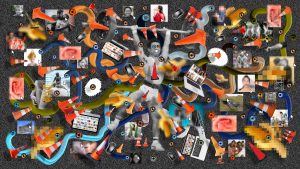
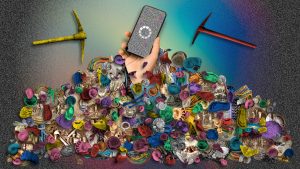
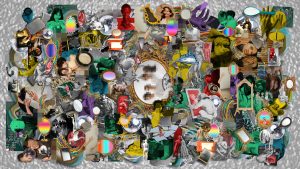
Clarote
Clarote is a designer and illustrator. Her images show the fragmented way people are captured, embedded, and (non / mis) represented through personal data points (e.g. in a recommender system or targeted ads). They comment on systemic forces driving AI development. Clarorte’s images could be viewed individually or as a triptych.
"The complexity of the mesh of structures, actors and resources behind AI systems is such that it becomes extremely difficult to portray its impacts and intertwinings – likewise, focusing on separate aspects for visual representation is also extremely difficult. The decision to develop a triptych was an effort to honour and portray the very complexity and entanglement of these issues, while showcase different lines of this messy, gooey mesh." - Clarote
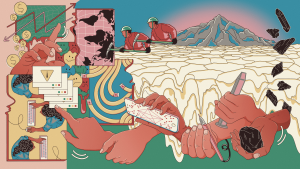

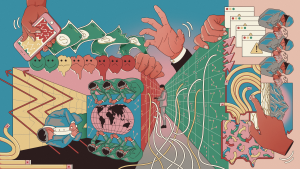
Jazmin Morris
Jazmin is a creative computing artist and educator. She produced 'Braided Networks' - a series of photographs that illustrate neural networks whilst referencing AI bias and the hidden human labour behind AI.
“The series focuses on a young brown woman with cornrows wearing and/or handling a braided hair sculpture in the form of a traditional network diagram. The hair sculpture uses existing methods of illustrating networks through a combination of balls made of braids representing nodes, and braided rods connecting the balls representing complex layers and architectures within the structure of a network. The intentional use of a brown, female model and references to African-Caribbean hair and aesthetics foreground concerns around AI bias, ethics and representation. The geometry of the finished hairstyle and sculpture in addition to the labour and time involved in styling afro hair mirror the unjust and unseen human labour behind AI development, often fronted by women of colour yet sold and disposed of to their disadvantage.” - Jazmin
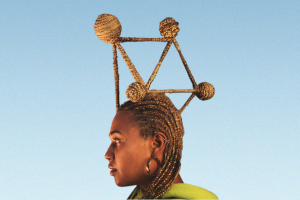
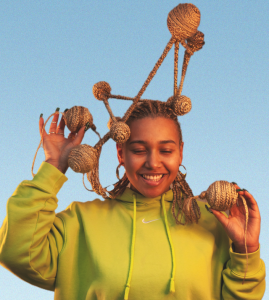
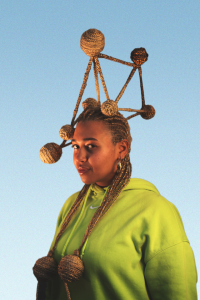
AI4Media may use cookies to store your login data, collect statistics to optimize the website’s functionality and to perform marketing actions based on your interests. You can personalize your cookies in .

